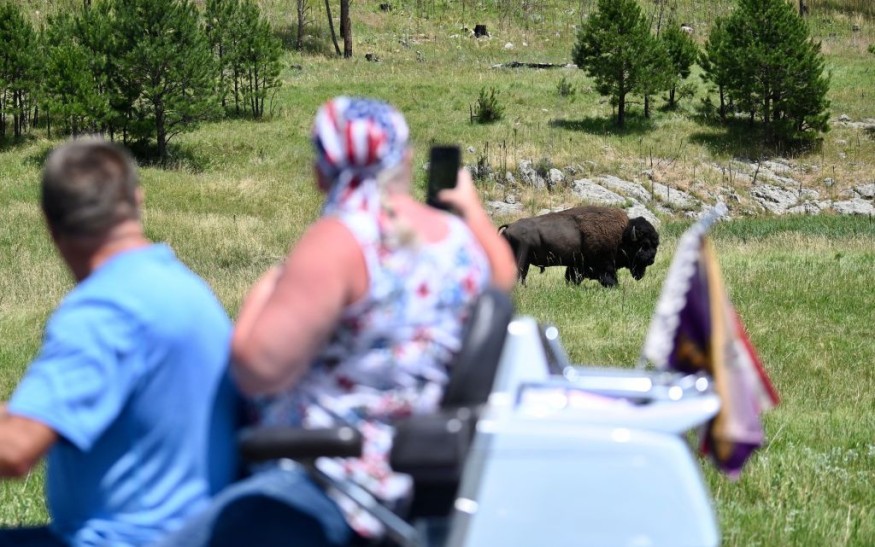
The rutting season had just begun when a female Minnesotan tourist was attacked by a bison at Theodore Roosevelt National Park's Painted Canyon on July 15.
Attacked in Theodore Roosevelt National Park
Park officials reported that the injured visitor was taken by Emergency Medical Services to a hospital in Dickinson, and later moved to Fargo, where she was last listed in a serious but stable condition.
It was round 11:00 AM when the reported ordeal happened near the Painted Canyon Trailhead.
The woman was given first-aid on-site by park rangers, along with the Billings County Sheriff, and a team of emergency medical services.
She was later transported by ambulance for further medical treatment.
Park officials reported serious wonds on the woman's abdomen and foot, however, the incident is still under investigation and details of the ordeal are yet to be defined.
Rutting Season
Visitors are also reminded by park staff that bison are big, strong, and wild animals.
They can outrun humans and can turn rapidly.
Bulls can be hostile from the middle of July to the end of August when they are rutting. During this period, use extra caution and allow them more room.
Visitors must adhere to park restrictions and keep at least 25 yards-the distance between two standard-sized buses-away from large creatures like bison, deer, pronghorn, elk, and horses.
If necessary, visitors should move in the opposite direction to prevent coming into contact with a wild animal nearby, KX News reports.
A 47-year-old Arizona lady was attacked by and gored by a bison early on Monday near Lake Lodge in Yellowstone Park, according to reports of another bison incident in Wyoming.
She was transported by life flight to a hospital in Idaho after suffering serious injuries to her chest and abdomen.
The National Park Service withheld her name. It was the second reported bison attack in the region this year and the first in Yellowstone, according to Cowboy State Daily.
Also Read : 'Albino' White Bison Calf in Wyoming State Park Revealed to Be Just a Pale Cattle, Says DNA Test
American Bison
At the start of the 1800s, approximately 60 million wild bison roamed the plains, forests, and river basins from Alaska to Mexico in North America.
These majestic creatures were considered the largest mammals on the continent, boasting large, bulky heads, big imposing horns, and thick, shaggy, dark coats.
However, their population dwindled drastically and dangerously over the years, and by 1889, only a mere 635 wild bison remained in the wild.
This alarming decline prompted the admisinistration of President Roosevelt to take action and list them as a protected species.
Owing to proper knowledge and reppopulation strategies, the wild bison population today is roughly at 20,500. The species is regarded as one of the most inspiring conservation success stories ever.
Bison can occasionally be calm and lethargic but sometimes they might be unexpectedly brazen and hazardous.
If they perceive a threat close to their calves, mothers become extremely protective.
National parks have been emphasizing the prohibition against approaching bison from less than 25 feet away, according to AZ animals.
Related Article : More Yellowstone Wildlife Being Harassed by Visitors, Officials Hunt Offenders as Park Posts Rules Again
© 2026 NatureWorldNews.com All rights reserved. Do not reproduce without permission.





